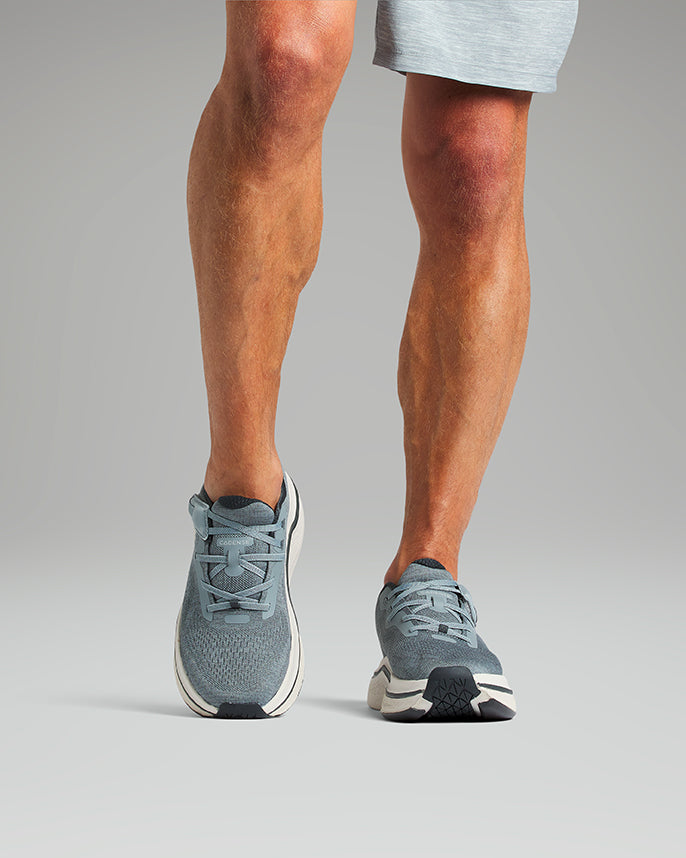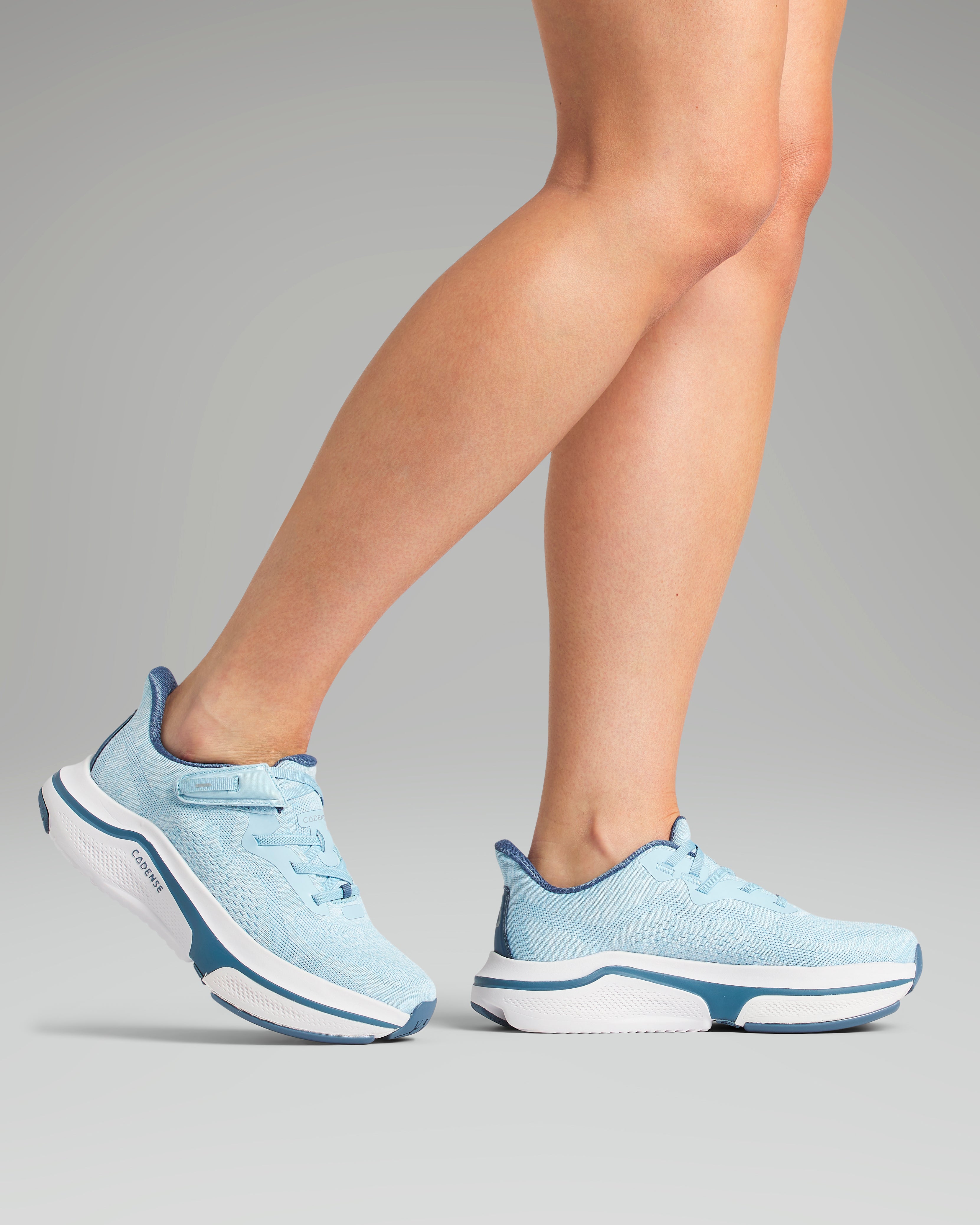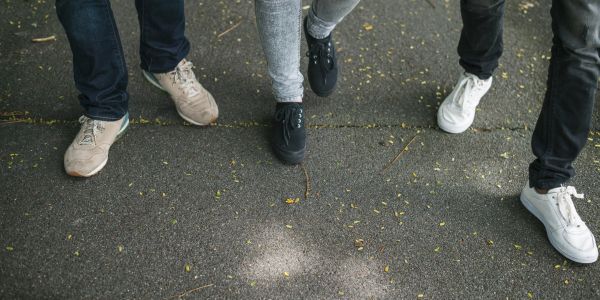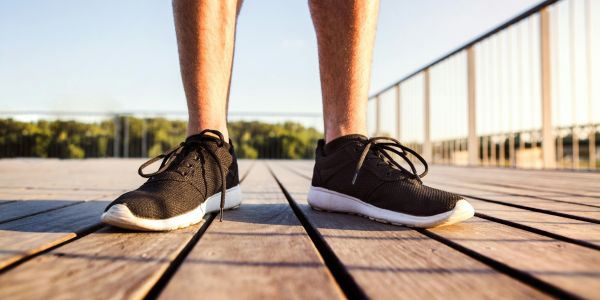
Best Walking Trainers for Foot Drop and Weak Ankles: Stability Features You Shouldn’t Miss
Walking with foot drop and weak ankles can feel like every step requires extra effort and concentration. The challenge often lies not only in lifting the foot but also in maintaining balance, preventing trips, and reducing strain on already vulnerable muscles and joints.
The right walking trainers can make a remarkable difference — turning each step into something more stable, safer, and less tiring.
In this guide, we’ll explore the key features that make the best walking trainers for people with foot drop and weak ankles, share real-world examples, and highlight how Cadense UK designs footwear that supports confidence and mobility every day.
Why Trainer Choice Matters for Foot Drop and Weak Ankles
Foot drop makes it difficult to lift the front of the foot, which increases the risk of tripping over small obstacles or uneven pavements. Weak ankles add another layer of difficulty, often causing wobbling, instability, and fatigue during longer walks.
While braces and orthotics play a vital role in support, trainers are the foundation. A poorly chosen pair can undo the benefits of these devices, while the right pair can make walking smoother, safer, and more comfortable.
Key Stability Features to Look For
When shopping for the best walking trainers for foot drop and weak ankles, these are the features that matter most:
1. Firm Heel Counters for Ankle Stability
The heel counter — the supportive structure at the back of the trainer — is essential for those with weak ankles. A firm heel counter keeps the ankle steady, preventing it from rolling inwards or outwards, reducing the risk of sprains and helping each step feel more confident.
Real-world tip: Many athletic or stability trainers include reinforced heel counters. Look for designs described as motion control or stability models.
2. Wide, Stable Base
A trainer with a slightly wider base provides greater ground contact and distributes weight more evenly. For people with ankle weakness, this translates to less side-to-side wobbling.
Practical recommendation: Walking trainers with a flared sole or rocker-bottom design can help stabilise your stride while encouraging smoother forward motion.
3. Lightweight but Supportive Construction
Heavy footwear can make foot drop worse, requiring more effort to lift the foot. However, trainers must still offer enough support for orthotics or ankle-foot orthoses (AFOs).
Look for: Breathable mesh uppers reinforced with lightweight synthetic overlays — this combination provides structure and stability without unnecessary bulk.
4. Cushioning that Reduces Impact
Weak ankles can lead to compensations in gait, placing extra stress on the knees and hips. Proper cushioning absorbs impact and protects your joints during each step.
Best options: EVA foam midsoles or gel-based cushioning are ideal for walking trainers that focus on both comfort and stability.
5. Low Heel-to-Toe Drop
A lower heel-to-toe drop — the difference in height between heel and forefoot — encourages a more natural walking stride. It also reduces the likelihood of catching the toes, which is especially helpful for people living with foot drop.
6. Secure Fastening Systems
Slip-ons may seem convenient, but they often lack the adjustability needed for weak ankles. Opt for laced, Velcro, or BOA-dial fastening systems, which provide a snug, customised fit and keep the foot from sliding.
Real-world note: If tying laces is difficult, Velcro or quick-toggle systems offer the same secure fit with less effort.

Trainer Categories That Work Well
Certain types of trainers naturally include the supportive design features needed for foot drop and ankle weakness:
-
Stability Trainers: Control over-pronation and keep the foot aligned.
-
Motion-Control Trainers: Provide maximum ankle support with a firmer structure.
-
Orthopaedic-Friendly Trainers: Designed with removable insoles and wider fits, making them AFO-compatible.
-
Trail Walking Trainers: Offer enhanced grip and stability, which can also benefit everyday use.
Practical Tips When Choosing Trainers
-
Bring your brace or orthotic: Make sure your trainers accommodate them comfortably.
-
Test on uneven surfaces: Try walking on different textures in-store to gauge performance.
-
Prioritise support over appearance: Comfort and safety come first — modern adaptive trainers are stylish and functional.
-
Replace worn-out pairs regularly: Even the best trainers lose cushioning and support over time.
How Cadense Fits Into the Picture
At Cadense UK, we understand that mobility challenges like foot drop and weak ankles affect far more than walking — they influence confidence, independence, and quality of life.
That’s why our adaptive trainers are built to prioritise stability, comfort, and compatibility with assistive devices such as braces or AFOs.
Our mission is simple: to make every step feel safer, easier, and more natural. Because when your trainers truly support you, the world becomes more accessible.
Choose the Right Trainers Today
The best walking trainers for foot drop and weak ankles aren’t about following trends — they’re about finding the perfect balance of stability, support, and comfort to help you move safely and confidently.
From firm heel counters to wide, cushioned soles and secure fastenings, these features make all the difference.
If you or someone you care for is living with foot drop or ankle weakness, choosing the right trainers is an important first step toward safer, more confident movement.
Explore Cadense UK to find adaptive trainers designed to restore comfort, improve balance, and support mobility every step of the way.




